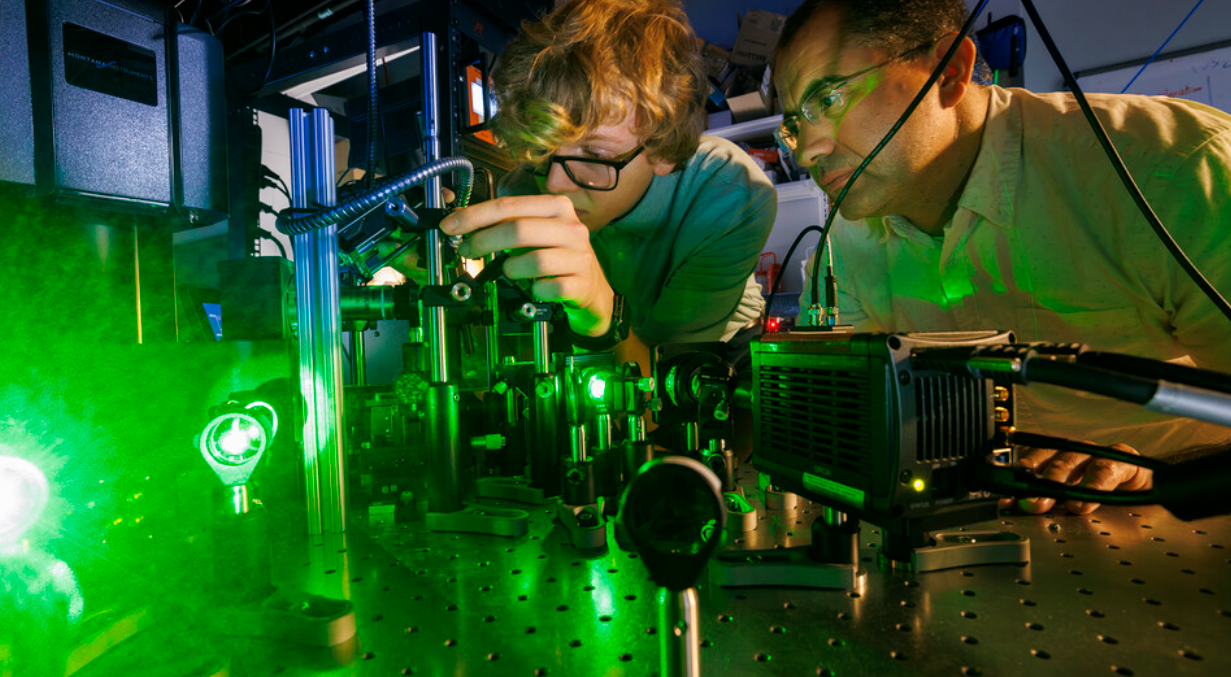Insider Brief
- Researchers at the University of Nebraska, in collaboration with Wichita State University, are working to improve quantum computing efficiency by seeking materials to reduce disruptions known as decoherence in quantum systems.
- Funded by an $800,000 NSF award, the team aims to develop quantum materials that maintain coherence at higher temperatures, reducing the need for costly ultra-cold environments typically required for quantum computing.
- The project focuses on exploring new materials like ultrathin magnetic films and two-dimensional magnetic materials to create more stable hybrid systems for quantum computers, potentially making the technology more accessible and affordable for broader applications.
UNIVERSITY RESEARCH NEWS — Lincoln, Nebraska/November 6, 2023 — By looking to create quieter environments, a team that includes Nebraska Engineering researcher Abdelghani Laraoui hopes to take a bit of the “noise” out of quantum computing and help make the emerging technology more efficient, accessible and feasible.
The goal is to find materials that show potential for improving the performance of quantum computers and that can be utilized to control the disruptions — also known as decoherence (or noise) — that keep these superfast computers from performing at their best.
“Quantum computers can do calculations in two minutes that would take 10,000 years if you used a classical system, but right now, they are difficult to scale up (for wider use) because they have to exist in very low-temperature environments, and that is very expensive to create,” said Laraoui, assistant professor of mechanical and materials engineering.

Laraoui is collaborating with Wichita State University researchers — physicist Kapildep Ambal and chemist Jian Wang — on a three-year, $800,000 Track 1 award from the National Science Foundation’s Expand Capacity in Quantum Information Science and Engineering (ExpandQISE) program.
This track pairs researchers, such as Laraoui, who have extensive QISE experience with individual researchers, such as Ambal and Wang, from institutions that have less expertise in advanced nanofabrication of quantum materials and cryogenic quantum sensing.
Unlike classic computing systems, quantum computers have no memory or processors, but instead use superconductive subatomic qubits, which store and process information and are ideal for higher-level tasks — such as running simulations and analyzing data — with superfast speed and precision.
But, Laraoui said, quantum computers often need an extremely cold environment around 10 mK (equivalent to -459 Fahrenheit) to perform well with lower error rates.
“The technology for cooling is difficult to find and is very expensive,” Laraoui said. “There’s only a few places that can do it.”
To overcome the need for a super cold environment, Laraoui said the research team is looking for new quantum materials where the quantum coherence is preserved even at higher temperatures (above 2 degrees Kelvin, roughly -456 Fahrenheit).
The Nebraska Center for Materials and Nanoscience, with funding help from another NSF grant on which Laraoui was a co-investigator, will soon receive a cryogenic scanning probe microscope with quantum sensing capabilities that can operate at temperature down to 1.8 K (roughly -456.4 Fahrenheit).
In Laraoui’s Quantum Sensing and Defect Discovery and Spectroscopy Lab, mechanical engineering graduate student Rupak Timalsina and first-year electrical engineering student Ben Hammons built another cryogenic optical microscope through which researchers can witness how the qubits in diamond substrates perform under the presence of other materials in contact. Funding for this, in part, included support from NSF Emergent Quantum Materials and Technologies Center the university has received, where Laraoui serves as a thrust 2 leader on quantum technologies.
Adding qubits would increase the capacity of a quantum computer, Laraoui said, much like how classic computers can perform more complex tasks when more bits added.
However, Laraoui said, the challenge in creating a larger network of qubits is that quantum systems are fragile and “the slightest amount of decoherence can keep them from performing well.” It’s similar to how a soap bubble pops when it touches another object, loses its unique characteristics and returns to a drop of liquid.
Laraoui’s team is seeking more robust materials such as ultrathin magnetic films and two-dimensional magnetic materials and will try to use them to control spin qubits in diamond at longer distances that can work at higher temperatures.
“The idea is that we can use them to make a hybrid system that contains these spin qubits with elements of a classical system,” Laraoui said. “With hybrid architectures, like a diamond substrate, you couple them with spin waves (magnons) that have certain excitations specific to certain materials.
“The longer coherence time will lead to operating quantum computers in less challenging environments, and that could be a breakthrough that can make them less expensive and more available for wider uses.”
Written by Karl Vogel | Engineering
Featured image: Ben Hammons, a freshman in electrical engineering, and Abdelghani Laraoui, assistant professor in mechanical and materials engineering, work on laser equipment. Credit: University of Nebraska
For more market insights, check out our latest quantum computing news here.

















